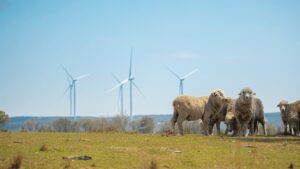Apple will soon be selling more than MacBooks, iPhones, iPads and watches to consumers. It may also be selling electricity.
In what is being regarded as something of a bombshell in the energy markets – albeit a long predicted one – Apple has quietly has created a new subsidiary called Apple Energy, and asked to obtain a licence to sell electricity directly to consumers, rather than back to the grid via the wholesale market.

The software giant’s intent is clear. Apple has vowed to source all of its electricity from renewable energy sources. It has already reached 93 per cent, buying the output of a host of large-scale solar projects in the US, wind projects, its own rooftop arrays, as well as a 1.1MW rooftop array in Singapore and aggregating the output from 800 different solar arrays.
The next step is to sell the output of its contracted and owned solar, hydro and biogas plants to its suppliers, to ensure that its supply chain is also sourcing all of its energy needs from renewables.
A further step, say analysts, will be to sell that output to consumers, possibly in conjunction with purchases of products such as iPhone and iPads, or even with electric vehicles. As we reported last month, Apple is spending more on research into EVs and autonomous vehicles than it did on iPhones, iPads and Apple watches combined.
There’s two good reasons for this. One is corporate reputation; Apple, like so many other major US and European companies, has signed up to become 100 per cent renewable. That is what the millennial generation expects of them.
The second is economic. Apple currently sells its excess electricity back into the grid at wholesale rates. If it can sell that electricity to its suppliers, and then to its customers, it is likely to get a significantly higher rate.
Apple already has contracts with 521MW of solar projects worldwide announced to date, making it one of the largest solar power end-users in the world.
Apple has sought permission to operate as an energy company from the FERC, the main US federal regulator. It filed its request on June 6 and wants an answer by August 6.
Tim Healy, the co-founder, CEO and chairman of EnerNoc, describes the move as a fundamental shift in the energy world and says its implications are vast.
“Essentially, Apple is seeking the ability to sell the renewable energy it generates to other businesses and consumers at retail prices,” he writes.
“Without FERC’s approval, Apple will only be able to sell its energy to energy providers and utilities at wholesale prices. Apple Energy would more or less act as an energy provider itself, enabling the company to leverage its investments in renewable energy like wind and solar to generate new revenue from an entirely new market.
“Most large organisations struggle to even know how much energy they’re using annually, much less operate a standalone energy company in what is one of the most highly regulated industries in the US. But Apple’s actions are driven by a few key trends that will likely impact most large enterprises – if not today, then in the relatively near future,” Healy writes.
“First – the discussions around corporate commitments to combat climate change are heating up (pardon the pun), and if your business doesn’t have a proactive strategy, regulations and mandates will eventually force you to develop one.
“Few businesses can go as far as Apple, but all organisations can start to mitigate risk by reducing their reliance on fossil fuel-generated power and setting science-based carbon reduction goals.
“With Apple’s aggressive head start at creating a diversified energy portfolio, the company has positioned itself to face the fallout of unexpected natural disasters, while also reducing its exposure to energy price volatility, increasingly strict regulations on carbon reductions, and the downstream effects of geopolitical upheaval that can disrupt energy markets at any given moment.”
And there is the impact on the incumbent energy industry. New technologies – not just in renewables, but in storage, and in software – mean the game is changing rapidly.
And as the industry becomes more digitalised and adapts to new business models, it is highly unlikely the providers of electricity in the new world may not be the same as those in the past. In fact, it will probably come from firms with the biggest marketing power – which is why the likes of Apple, Google, Facebook and telcos such as Telstra are looking at the sector with such interest.








